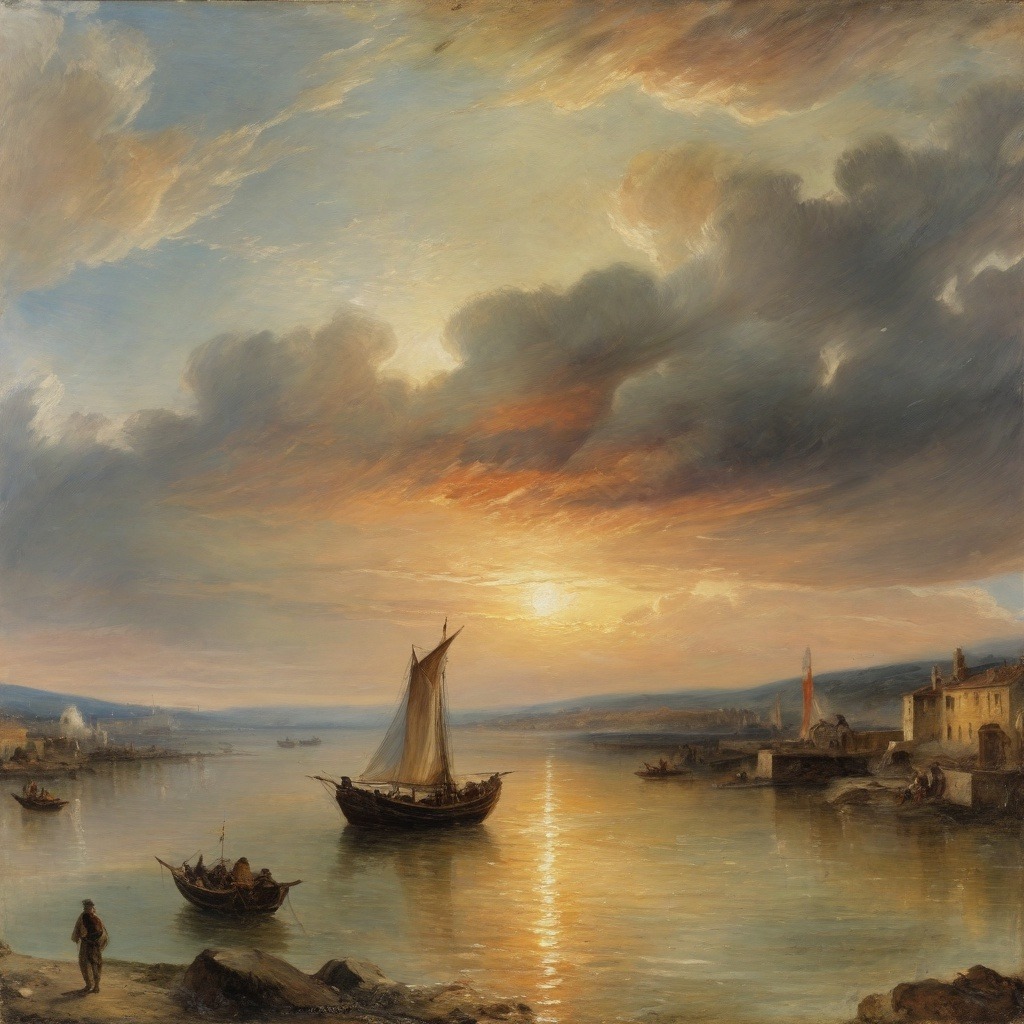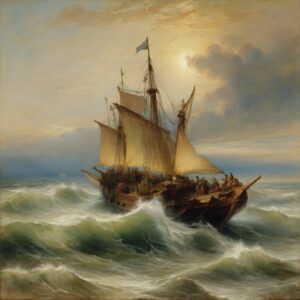Romanticism was a cultural movement that developed in the late 18th and early It developed in Europe in the 19th century and manifested itself in various fields such as art, literature, music and philosophy. This era was characterized by a strong sense of emotionality, individuality and longing for freedom and self-determination. Romantic art reflected on a variety of themes, including nature, the supernatural, the subjective, and the unconscious, expressing a longing for the sublime and transcendental.
The use of generative artificial intelligence (AI) in the context of Romantic art offers fascinating opportunities to explore the distinctive features and styles of that era and create new works that capture the emotional depth and expressiveness of Romanticism. Generative AI algorithms can be trained to mimic the stylistic elements and themes of Romantic art and generate artworks that reflect the Romantic aesthetic and atmosphere.
An important feature of Romantic art is the emphasis on nature and the natural landscape. Romantic artists such as Caspar David Friedrich and J.M.W. Turner showed a deep connection to nature and used it as a means of expressing their own feelings and sensations. Generative AI algorithms can learn to capture the beauty and drama of nature and generate artworks that capture the romantic notion of the sublime and pristine nature.
Another characteristic feature of Romantic art is the emphasis on the subjective and the internal. Romantic artists explored the inner worlds of man and expressed their own feelings and emotions in their works. Generative AI algorithms can learn to capture complex emotional nuances and generate artworks that evoke a strong emotional resonance in the viewer.
In addition, Romantic art was characterized by a variety of styles and techniques, ranging from painterly landscape painting to dramatic history painting. Artists experimented with different techniques to realize their romantic visions and find their own forms of expression. Generative AI algorithms can learn to mimic the different styles and techniques of Romantic art and generate artworks that reflect the diversity and innovation of that era.
When generating the art style of Romanticism using Artificial Intelligence (AI), there are several important aspects to consider in order to successfully capture the characteristic features and moods of this era:
- Nature and landscape: A central theme of romantic art is the depiction of nature and the natural landscape. Romantic artists such as Caspar David Friedrich and J.M.W. Turner had a deep connection to nature and used it as inspiration for their works. Generative AI algorithms must learn to capture the beauty and drama of nature and generate artworks that capture the romantic notion of the sublime and pristine nature.
- Emotion and subjectivity: Another important feature of Romantic art is the emphasis on the subjective and individual emotions. Romantic artists explored the inner worlds of man and expressed their own feelings and sensations in their works. Generative AI algorithms must learn to capture complex emotional nuances and generate artworks that evoke a strong emotional resonance in the viewer.
- Symbolism and allegory: Romantic art was often characterized by symbolism and allegory, which were intended to convey deeper meanings and concepts. Romantic artists used symbols and metaphors to express their ideas and feelings, giving the viewer a narrative depth. Generative AI algorithms need to learn to recognize symbolic elements and generate artworks that have a poetic and allegorical dimension.
- Mood and atmosphere: Romantic artwork is often characterized by a certain mood and atmosphere, which can range from melancholy to longing to awe. Generative AI algorithms need to learn to capture the subtle nuances of moods and atmospheres and generate artworks that evoke a certain emotional resonance in the viewer.
- Stylistic Elements and Techniques: Romantic art encompassed a variety of styles and techniques, including painterly landscape painting, dramatic history painting, and mystical symbolism. Generative AI algorithms must be able to mimic the various stylistic elements and techniques of Romantic art and generate artworks that reflect the diversity and innovation of that era.
By taking these important aspects into account, generative AI algorithms can create works of art that capture the essence and spirit of romanticism and open up new possibilities for creative design. Nevertheless, it is important to emphasize that the generation of art by means of AI also raises ethical questions, especially in terms of originality, authorship, and cultural appropriation. Artists using generative AI should ensure that their work meets ethical standards and maintains integrity and authenticity in the art world.
Overall, the use of generative AI in the context of Romantic art offers an exciting opportunity to push the boundaries between man and machine and create new works that capture the timeless beauty and expressiveness of Romanticism. By combining human inspiration and machine intelligence, new works of art can be created that transfer the heritage and cultural significance of Romanticism into a modern and technologically advanced era.






















